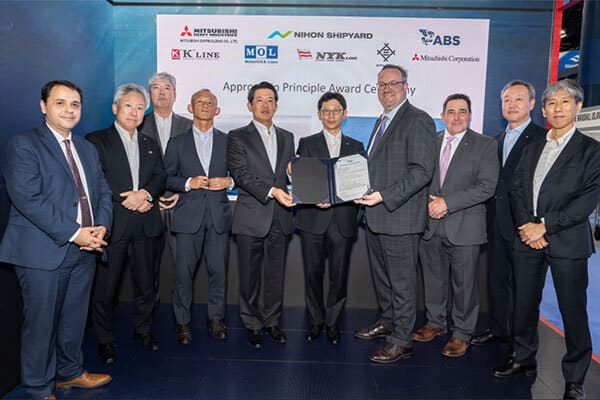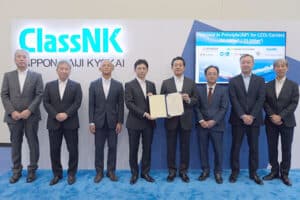New CO2 Carriers Set for Large-Scale Global Transport by 2028
Japan's Shipping Giants Achieve Key Approval for CO2 Carriers

Japanese Companies Get Approval for CO2 Carriers to Start Global Shipping by 2028
Japan’s biggest shipping and shipbuilding companies have reached a major milestone in their efforts to develop large CO2 carriers. These ships will transport captured carbon dioxide (CO2) from Japan to storage sites overseas, helping with the country’s efforts to reduce carbon emissions.
Mitsui O.S.K. Lines (MOL), Kawasaki Kisen Kaisha (“K” Line), Nihon Shipyard, Nippon Yusen Kaisha (NYK Line), Mitsui & Co., Mitsubishi Corporation, and Mitsubishi Shipbuilding recently received “Approval in Principle” (AiP) from two important organizations: the American Bureau of Shipping (ABS) and Nippon Kaiji Kyokai (ClassNK). This approval is crucial for the design of two types of low-pressure liquefied CO2 carriers.
The AiP was presented at the Gastech 2024 conference in Houston, Texas, which focused on energy and environmental issues such as natural gas and hydrogen. The two types of ships that received approval are low-pressure CO2 carriers, which will play a key role in the future of carbon capture and storage (CCS) technology.

What is Carbon Capture and Storage (CCS)?
CCS is a process where carbon dioxide is captured from industries or other sources before it enters the atmosphere. The CO2 is then transported and stored underground to prevent it from contributing to global warming. To transport large amounts of CO2 across long distances, ships like the newly approved LCO2 carriers are essential.
Key Features of the LCO2 Carriers
The two ship models that received approval are a 50,000m³ vessel and a 23,000m³ vessel, both designed for long ocean voyages. These ships use low-pressure systems to carry CO2, making them safer and more efficient for international transport. One significant change in their design is the switch from using nickel steel to other types of steel for the cargo tanks. This helps reduce costs and simplifies the manufacturing process.
Another improvement is that some of the difficult heat treatments used in building the cargo tanks may no longer be necessary. This change, known as Engineering Critical Assessment (ECA), makes it easier and faster to build these ships.
Why Is This Important?
The demand for CO2 carriers is expected to rise as more carbon capture projects take off in Japan and around the world. Japan is looking to ship captured CO2 to overseas storage locations, and having standardized ships for this purpose will make the whole process smoother and more cost-effective. By standardizing these carriers, the companies involved can build and supply the ships faster and meet the growing demand for CCS technology.
ABS Publishes Industry-Leading Requirements for Liquefied Carbon Dioxide (LCO2) Carriers
Collaboration for a Greener Future
This project involves collaboration between several of Japan’s largest companies, including MOL, “K” Line, NYK Line, Mitsubishi Shipbuilding, and more. Together, they are working on creating a reliable supply chain for these CO2 carriers, aiming to contribute to the global effort to reduce carbon emissions.
This initiative is part of the MOL Group’s long-term vision, which aims to develop businesses that support environmental sustainability. Their “BLUE ACTION 2035” plan highlights the importance of expanding into non-shipping businesses, such as CCS and other green technologies. MOL is focused on contributing to the protection of the environment by providing solutions that reduce carbon emissions and help achieve a more sustainable future.
What’s Next?
With these two new ships set to begin operations in 2028, the companies are looking to establish a full-scale supply chain for carbon transportation. This means building more ships, improving technology, and finding new ways to make transporting CO2 even more efficient. As the world continues to focus on reducing carbon emissions, these CO2 carriers will play an important role in helping countries meet their climate goals.
In the coming years, we can expect to see more developments in CO2 shipping, with Japan leading the way in creating the technologies and ships needed for large-scale international transport. This is a key step towards a cleaner and greener future.
